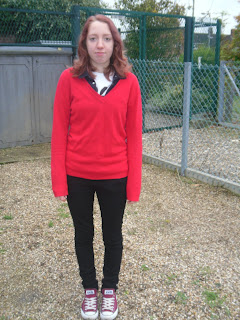One of the first music videos to use the idea of lyric/cue cards is the music video for Subterranean Homesick Blues by Bob Dylan. This black and white music video only put the most significant words from each line onto each card - this simplifies the lyric cards and stops them from becoming confusing. Because of this, we will try lyric cards with only the major parts of each line on them as well as the lyric cards with the whole line written on them that I have already made.
This music video is so iconic that it has been copied and referenced many times - one example is the parody of the music video performed by Jake Humphrey and David Coulthard as the intro to the BBC's coverage of the 2012 Australian GP (a Formula 1 race).
In this video, the location is used as a cultural signifier again. The graffiti on the wall is a signifier of the modern age of creativity, art, and youth. The lyric cards are similar to the ones used in the original music video, in terms of the lyrics themselves, but there are many exceptions. These exceptions are there to make the song relevant to Formula 1 - as it is a Formula 1 TV show - but some of the exceptions are very similar to the actual lyrics used in the original music video. An example of this is when Jake Humphrey reveals a card with the word "off" written on it and "laid off" is heard in the background - a reference to when Sergio Pérez had to miss some races after a large crash in the third qualifying session for the previous years (2011) Monaco Grand Prix. This is similar to the point in the original music video where the lyric card with "laid off" is revealed and the same words are heard - these points in the two music videos are very similar, but also very different. This intelligent adaptation of the original music video produces what is, in my view, a worthy, high quality parody.
Furthermore, the montage of the 2011 Formula 1 World Championship that is placed onto the wall in the background of the parody not only strengthens the links to Formula 1, but supports the graffiti as another reference to the modern era that has embraced technology.


































